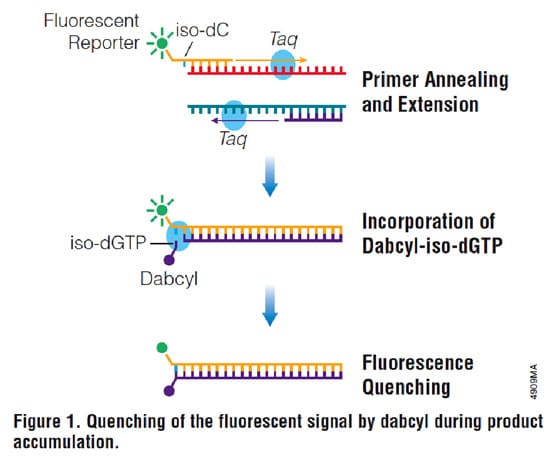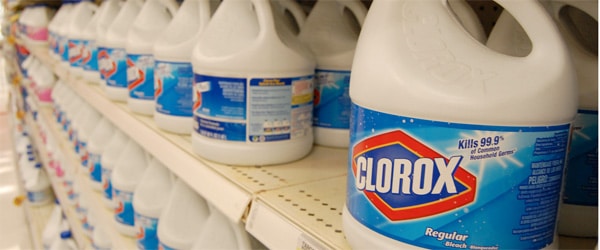The primers for your gene of interest have finally arrived in the mail, and you’re ready to figure out whether your favorite gene’s expression level is elevated in those precious tissue samples. Only one small last step before you can proceed. Primer validation. This is a standard procedure where you run PCR or qPCR on serial dilutions of your sample (in this case cDNA) each time you get a new set of primers to ensure that the primers are of good quality, and to find the optimal primer annealing temperature.
Primer validation is fairly simple, and you reckon that you will do it before your lunch break. Then, you’ll return to tackle the first batch of samples. But after lunch, you retrieve your flash drive to check out your results and find that your primers did not validate.
It’s a frustration, but a minor one at present. You might be able to solve the problem very easily by double-checking the primer sequences. If you lifted these from an article or a colleague’s notebook, one or more nucleotides might be omitted, duplicated, or mistyped. Talk about a nonsense mutation! You can easily design new primers or buy a new set of predesigned primers from a reputable source. This is as easy as making serial dilutions, right? But what happens when the validation fails with the next set of primers, and the next, and the next?
What Do You Do When Your Primers Just Won’t Validate?
1. Clean up Your Freshly Isolated Nucleic Acids
Environmental samples such as soil or feces often contain organic material that can linger in nucleic acid extracts and inhibit reverse transcription and downstream PCR or qPCR. These substances are generally referred to as PCR inhibitors and include: tannins, salts, phenol, melanin, and humic or fulvic acids. For a price, you can buy RNA and DNA clean up kits or PCR inhibitor removal kits, and if your lab isn’t flush, you can go the manual route to remove inhibitors by performing an extra chloroform wash after extraction to remove phenol contamination, while isopropanol/ethanol washes are effective for removing salt contaminants.
2. Purify Your cDNA
Occasionally, components remaining in your cDNA preparation after reverse transcription (RT) reaction can interfere with qPCR. In particular, this may happen with the reverse transcriptase enzyme, which can inhibit Taq polymerase. This tends to be less of a problem when amplifying abundant templates, because the volume of sample cDNA will likely out compete the inhibitors. In some instances, however, such as single-cell qPCR which contains fewer copies of the template, inhibitors from the RT reaction can be detrimental [1]. In such cases, purifying your cDNA is a crucial step to allow for optimal amplification of the template during qPCR. This can be done manually through washing with ethanol, or through commercially available kits.
3. Verify That Your Gene of Interest Is Expressed in Your Sample
Does your tissue actually express the gene you’re interested in at a suitable level for quantification? If your gene of interest is weakly expressed (or not at all expressed) in your sample, two or more of the least concentrated dilutions in your validation may show similarly high CTs, causing your validation to fail. Before running a sample with new primers, it is good practice to scour the literature e.g., transcriptome data to determine whether or not your gene of interest is likely to be expressed in your sample type.
4. Check Your qPCR Conditions
When qPCR conditions are not optimal, one very likely culprit is a wrong primer annealing temperature (Ta). Ta should always be about 5°C below the melting temperature (Tm) of your primers, and different primers will have different melting temperatures depending on the sequence. New primers usually come with guide Tms, or Tm calculator software online can help you determine the Tms.
Use this handy equation when you need to calculate the optimal Ta for your qPCR reaction:
Ta = 0.3 x(Tm of primer) + 0.7 x(Tm of PCR product) – 25
5. Check Your Reagents
Last but not least, double check your qPCR protocol. Are you adding the right reagents at each step? If, for example, you add more Mg2+ than necessary, you might have excessive non-specific primer binding resulting in primer dimers. On the other hand, too little may impede sufficient primer polymerization leading to low yields.
It’s a hard knock life when your primers don’t validate, but with these 5 tips in mind, you should be on the road to recovery, and on the path to discovery in no time.
Other problems with qPCR? Check out this handy troubleshooting checklist https://bitesizebio.com/343/the-essential-pcr-troubleshooting-checklist/.
References:
- Liss, B. Improved quantitative real-time RT–PCR for expression profiling of individual cells. Nucleic Acids Research, 2002. 30(17): p. e89-e89.







